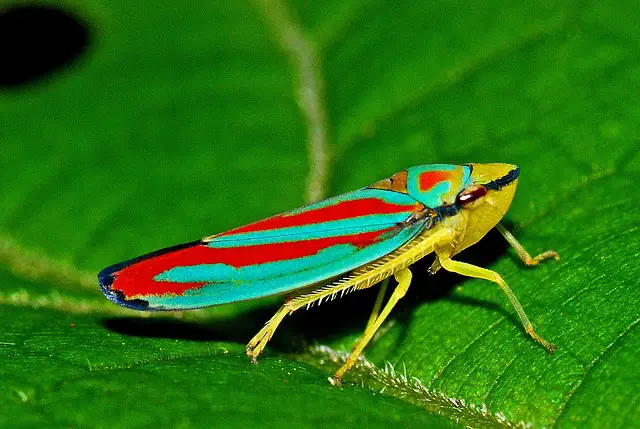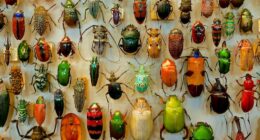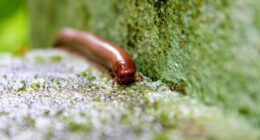Understanding the difference between insects and bugs is essential in scientific studies, pest control, and general knowledge. Insects are a diverse group of organisms that have three body segments, six legs, two pairs of wings (if present), and antennae. Bugs are a specific type of insect that has specialized mouthparts for piercing or sucking liquids from their host plants or animals.
What are insects?
(Image by Adina Voicu from Pixabay )
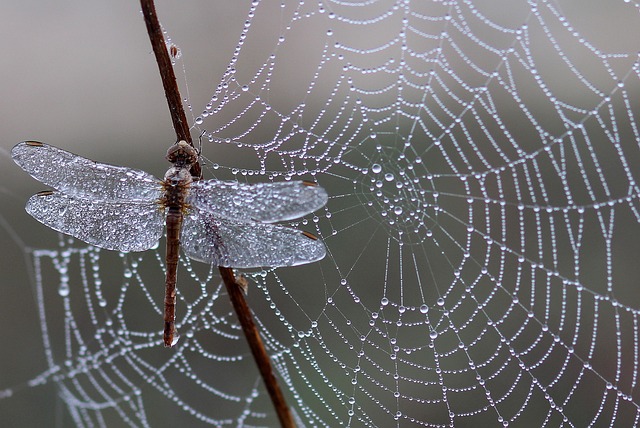
Insects are a class of animals that include creatures like ants, butterflies, and beetles. They have three body segments – head, thorax, and abdomen – and typically six legs. Insects also have wings in some form or another, although not all species are able to fly.
One of the defining features of insects is their exoskeletons – hard outer coverings that protect their bodies. This shell-like structure provides support for internal organs as well as protection from predators.
Another important characteristic of insects is metamorphosis – the process by which they transform from a larval stage into an adult form. There are two types of insect metamorphosis: incomplete (where the juvenile looks like a smaller version of the adult) and complete (where there is a distinct difference between larva and adult).
Insects play vital roles in ecosystems as pollinators, decomposers, and even predators themselves. Without these tiny creatures buzzing around our gardens and forests, our world would look very different indeed!
What are bugs?
(Image by Francisco Corado Rivera from Pixabay )
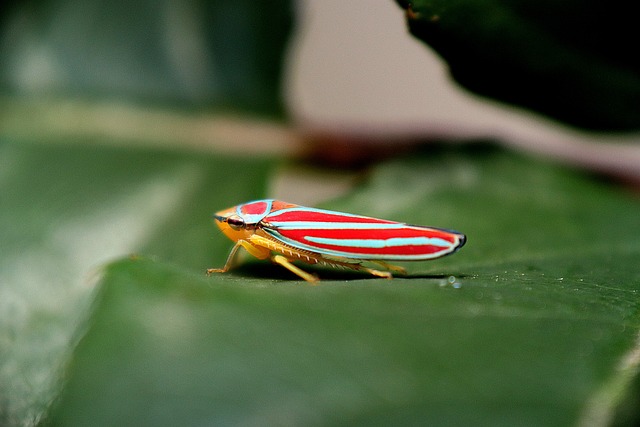
Bugs are a type of insect that belong to the order Hemiptera. They have a distinctive mouthpart called a proboscis, which they use to suck fluids from plants or other insects. The term “bug” is often used colloquially to refer to any small crawling or flying creature, but this is incorrect.
True bugs can be identified by their characteristic triangular shape when viewed from above, as well as their wings and antennae. They also have piercing-sucking mouthparts that allow them to feed on sap or other fluids.
Some common examples of true bugs include stink bugs, cicadas, aphids, and leafhoppers. These insects can be found in many different habitats around the world.
It’s important to note that not all small crawling creatures are considered bugs – for example spiders are not classified as such since they do not possess the characteristics that define true bugs.
Understanding what constitutes a bug versus an insect is important for accurately identifying different species and understanding their unique behaviors and habitats.
Insects Vs. Bugs – Key differences
Insects and bugs are often used interchangeably, but they do have some key differences. Insects belong to the class Insecta, which is characterized by having three body segments, six legs, and wings in some species. Bugs, on the other hand, belong to the order Hemiptera and have specialized mouthparts for piercing and sucking.
One of the most noticeable differences between insects and bugs is their wings. While not all insects can fly, those that do have two pairs of wings that are typically transparent or translucent. Bugs also have two pairs of wings but one pair is thicker than the other and covered with a hardened outer layer called hemelytra.
Another difference lies in their mouths. Insects have mandibles or jaws that move sideways while bugs possess long proboscises which they use to suck fluids from plants or animals.
In terms of behavior, insects tend to be more diverse compared to bugs as they occupy an extensive range of habitats including terrestrial (land), freshwater aquatic (rivers), marine aquatic (oceans) whereas most species within Hemiptera thrive best on vegetation such as crops.
Knowing these distinctions helps individuals become better acquainted with common pests around homes and gardens because some critters like spiders may look like insects at first glance when technically they’re arachnids while others like earwigs resemble insect pests yet are classified under Dermaptera instead- highlighting how important it is to know the difference!
Why is it important to know the difference?
Knowing the difference between insects and bugs may seem like a trivial matter to some, but it is quite important. Firstly, understanding the differences can help in identification which is critical for pest control measures. Knowing whether you’re dealing with an insect or bug can guide your choice of treatment options.
Secondly, being able to distinguish between insects and bugs helps us understand their ecological roles. Insects play different roles in pollination and nutrient cycling compared to pests like bedbugs that feed on blood and are carriers of diseases.
Thirdly, knowing the difference can aid our curiosity about nature. By learning about these creatures’ characteristics, we can appreciate their uniqueness better.
It’s also crucial from an academic standpoint since entomologists use specific criteria when classifying organisms based on morphological traits. Therefore proper classification requires knowledge of these distinctions.
Knowing whether something is an insect or not makes us more aware of biodiversity around us- enhancing environmental awareness while providing insight into the complexity of nature around us
Which bugs are not insects?
It is important to note that not all bugs are insects. Bugs belong to a group of creatures known as Hemiptera, which means “half-winged” in Greek because their wings are partly hardened and partly membranous.
Some examples of bugs include aphids, cicadas, bed bugs, stink bugs and leafhoppers. Unlike insects, they have specialized mouthparts that allow them to pierce plant or animal tissue and suck out sap or blood.
One key feature that distinguishes true bugs from other insects is the presence of distinctive scent glands on their bodies. These glands produce chemicals used for defense against predators or communication with each other.
While there are many different types of bugs in the world, it’s important to remember that not all six-legged creatures fall into this category. Understanding the difference between insects and true bugs can help you identify various species more accurately and appreciate the diversity of life around us.
Examples for Insects
Insects are the most diverse and abundant group of animals on Earth, with over 1 million different species identified to date. They can be found in almost every habitat on the planet and play essential roles in ecosystems, from pollination to decomposition.
One of the best-known examples for insects is the butterfly. Butterflies belong to the order Lepidoptera and are characterized by their colorful wings with intricate patterns. They undergo a complete metamorphosis from egg to caterpillar to pupa before emerging as an adult butterfly.
Another example for insects is bees, which also belong to the order Hymenoptera along with wasps and ants. Bees are known for their role in pollinating plants and producing honey. They have specialized body parts such as pollen baskets on their hind legs that enable them to carry pollen from one flower to another.
Ants themselves are another popular example for insects, belonging also under Hymenoptera Order. Ants live in colonies headed by a queen and perform various tasks such as caring for young, gathering food, and defending against predators.
Other examples of insects include grasshoppers (Orthoptera), ladybugs (Coleoptera), dragonflies (Odonata), mosquitoes (Diptera) among several others.
While there may be variations between each insect species’ behavior or unique features – all these tiny creatures play significant ecological roles that make our planet habitable!
Examples for bugs
Bugs are a group of insects that have certain characteristics that differentiate them from other types of insects. There are many examples of bugs, and some of the most common ones include aphids, cicadas, stink bugs, and bed bugs.
Aphids are tiny insects that feed on the sap of plants. They can be green or brown in color and often live in colonies on leaves or stems. Despite their small size, they can cause significant damage to crops if left unchecked.
Cicadas are known for their loud buzzing sound that fills the air during summer months. These flying insects have large eyes and wings but do not bite or sting humans. Instead, they feed on plant sap using their long proboscis.
Stink bugs get their name from the unpleasant odor they emit when threatened or crushed. These shield-shaped insects can vary in color from brown to green and often infest gardens and farms where they eat fruits and vegetables.
Bed bugs are small parasitic insects that feed exclusively on blood – usually human blood! They hide during the day but come out at night to feed while people sleep. Bed bug infestations can be difficult to eliminate without professional help.
These examples show just how diverse the world of bugs is! While many people may find these creatures creepy or annoying, it’s important to remember that each one plays a role in our ecosystem – even if we don’t always appreciate it!
Is Ant an insect or bug?
Ants are fascinating creatures that can be found all around the world. But, what exactly are they? Are ants insects or bugs? Well, the answer is quite simple – ants are insects! In fact, they belong to the same order as other well-known insects such as bees and wasps.
So what makes an ant an insect? For starters, like all other insects, ants have three body parts – head, thorax and abdomen. They also have six legs which are attached to their thorax. Another characteristic of ants is their antennae which help them sense their surroundings.
However, even though ants are classified as insects, not all insects are considered to be ants. Ants have unique physical features such as a narrow waist (called a “petiole”) between their thorax and abdomen which sets them apart from other types of insects.
While there may be some confusion about whether an ant is an insect or bug; it’s important to remember that these tiny creatures fall under the category of being part of the vast group known as “insects”.
